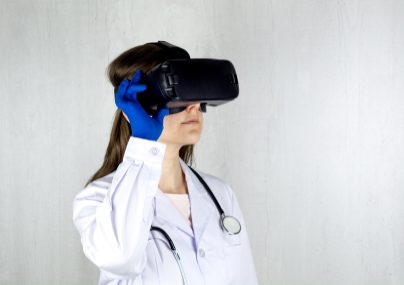 2020年10月17日,中国《专利法》在历经12年后迎来了第四次修订,新法将于2021年6月1日生效。法律专家指出,新法将对中国医药行业产生重大影响,其加大赔偿力度的新规也使专利诉讼更具分量要。
2020年10月17日,中国《专利法》在历经12年后迎来了第四次修订,新法将于2021年6月1日生效。法律专家指出,新法将对中国医药行业产生重大影响,其加大赔偿力度的新规也使专利诉讼更具分量要。
中国《专利法》颁布于1984年,伴随国内外经济环境和专利保护需求的不断变化,其在颁布后每八年都经历过一次修订。然而自2008年第三次修订后,时隔12年,第四次修订才终于尘埃落定。虽然有些姗姗来迟,但这部将于2021年中旬生效的新法,其影响力仍可谓“重磅”。
谈及此次修法背景,万慧达知识产权合伙人李森博士指出,应该在更为宽泛的时间背景下理解中国《 专利法》的演变历程。
李博士告诉ALB,《专利法》的每次修订背后都有着复杂而有趣的国内外背景。1992年1月,中美政府谈判签订了《关于保护知识产权的谅解备忘录》,1992年修订因此直接对应了《备忘录》的内容。“这次修订比较大的变化是把医药产品纳入了《 专利法》保护范围,对中国药品行业的发展有比较大且正面的影响。”
第二次修法则发生在2000年,“ 背景是‘入世’,目的很简单:使中国专利保护和WTO的TRIPS协议一致。这次修订使得中国《专利法》基本和国际标准接轨,我们的专利实践,特别是诉讼实践,也是从2000年以后才多起来。然而国内实践又提出了很多新问题,于是有了2008年的修改。”
“不过,2008年的修订并没有解决当时存在争议的全部问题,所以,第四次修改实际上从2008年修法结束后就着手了。专利局当时提出了‘部分修改’的设想,但没能落实,第四次修法最终在2020年结束。”李博士说。
谈及此次修法的目的,中国国际贸易促进委员会专利商标事务所副所长龙传红律师对ALB指出:“ 过去12年,国内和国际经济环境、创新环境、竞争态势发生了显著变化。2014年,全国人大常委会曾对《专利法》实施效果进行了检查,认为专利质量水平较低、侵权行为时有发生、专利运用能力不足、专利公共和市场服务能力不强……这次修改的一个目的就是从制度层面解决这些问题。”
加强知识产权保护、提高自主创新能力,已经成为中国加快转变经济发展方式、实施创新驱动发展战略的内在需要。而第四次《专利法》修改,正是中国经济发展到新阶段后提出的内在需求。”
— 龙传红,中国国际贸易促进委员会专利商标事务所
在2021年新年讲话中,习近平再次提出“科技创新是核心”,而作为与保护创新息息相关的法律,时代也强烈需要符合现状的新《专利法》 。“中国正处在转变发展方式、优化经济结构、转换增长动力的攻关期。加强知识产权保护、提高自主创新能力,已经成为中国加快转变经济发展方式、实施创新驱动发展战略的内在需要。”龙律师指出,“而第四次《专利法》修改,正是中国经济发展到新阶段后提出的内在需求。”
而在李森博士看来,新法此次出台的国际背景也不容忽视。“特别与医药专利相关的条文和2020年1月《中美第一阶段经贸协议》是对应的。”他说,“所以这次修法既有非常强烈的国内需求,也有中美协议的推动,使得修法在这个时间点能够这样完成。这实际也反映了在报道诸多的中美角力之外,两个大国沟通合作的一面。”
医药行业将受主要影响
两位律师都向ALB指出,未来受新法影响最大的预计是中国医药行业。
龙律师解释了新法重点关注医药领域的原因。对于医药行业来说,“新药研发投入高、产出低,风险高、成功率低、研发周期长、专利数少,对专利保护具有独一无二的高度依赖性”。他举了几个具体数字:2010年单个药品的研发投入就高达25亿美元;而研发产出比在各个行业中是最低的,1995-2007年总体临床试验成功率平均仅为约12%;药物从发现到获得上市审批可达14.5年,且每个药品的专利数量平均只有几个。
“可以说没有有效的专利保护就没有医药创新,这就是为什么新《 专利法》特别强调对于医药行业专利的保护。”龙律师说。
而在李森博士看来,此次修法,实际上补全了2008年修法时针对医药专利保护的一个“未完成的命题”。
“2008年修法时一个重要的法律和政策变化,是通过增加‘Bolar例外’条款鼓励仿制药发展。”李博士说。Bolar例外指的是仿制药厂为了通过药监局审批,制造或使用仍在专门保护下的药品,因为此种行为的目的是通过上市审批而非销售,因此作为例外,不被认定为侵权。
Bolar例外条款源自美国1984年颁布的《哈奇-韦克斯曼法案》(Hatch-Waxman Act),不过在许可提前仿制的同时,为了平衡利益,《法案》同时规定了“专利链接制度”和“药品专利期限补偿制度” ,后两者却并没有在2008年被采纳。“2008年的修法可以说把这个政策取了一半,更倾向于仿制药。现在我们把另一半给加了进来。”李博士说。
龙律师向ALB解释道,所谓专利链接制度,“主要目的是使药品审批程序与专利侵权诉讼进行关联,尽早在仿制药审批过程中解决专利侵权纠纷,保护药品专利权人的合法权益” 。具体来说,药品专利权人可以到法院提起诉讼,经过法院确认仿制药是否侵犯专利权后才能够上市。
而专利期限补偿制度则可以补偿新药上市审批所占据的专利有效期。龙律师告诉ALB,根据新法规定,“对在中国获得上市许可的新药相关发明专利,国务院专利行政部门应专利权人的请求给予专利权期限补偿。补偿期限不超过五年,新药批准上市后总有效专利权期限不超过十四年”。
上述新制度具有相当的复杂性,因此李森博士观察到,“不光是法律进行了修改,药监局、专利局、法院等也都积极出台配套措施、实施细则草稿,可以看出是下了大决心的系统变化”。而“下决心”的原因,在李律师看来,除了中美第一阶段协议的要求,更是和2015年以来中国医药行业进行的供给侧改革——即加快新药上市、提高仿制药竞争力,维护市场健康发展,紧密相关。
李博士认为,新制度“具体怎么落实,每个环节都需要细化”,他预计新法将鼓励更有竞争力的医药企业成长,甚至引发医药行业的通盘调整,“接下来几年应该有很多精彩的故事”。
赔偿新规增加专利诉讼的分量
新《专利法》的另一个重大变化,则在于改变并新增了侵权赔偿规定。
在李森博士看来,专利侵权赔偿数额低而不足以鼓励创新是长期没有解决的问题,这次修法强调加大赔偿力度非常及时。
龙律师详细指出了赔偿层面的两点变化,首先是“新增了惩罚性赔偿制度,即对故意侵犯专利权,情节严重的,法院可以在按照权利人受到的损失、侵权人获得的利益或者专利许可使用费倍数计算的数额1到5倍内确定赔偿数额”;其次则是将法定赔偿额上限从原来的100万元提高到了500万元。
“同时,为解决专利案件的举证难问题,新法完善了证据规则,在权利人已经尽力举证,而与侵权行为相关的账簿、资料主要由侵权人掌握的情况下,法院可以责令侵权人提供,从而减轻权利人的举证负担。”龙律师补充说,“这些举措有望从根本上解决中国在专利维权方面长期存在的举证难、成本高、赔偿低等问题。”
谈到新赔偿规则未来可能产生的影响,李森博士告诉ALB,一方面,法定赔偿额的提高“增加了对侵权的威慑力度,尤其能够抑制侵权成本非常低的小型泛滥侵权”;另一方面,强有力地推动惩罚性赔偿能够“刺激法院在确定赔偿额方法上进行更大胆的尝试”。他举了个例子:例如在确定权利人损失时,商业上有许多方法、经济学上也存在很多模型,未来有望“跨界”应用到裁判过程之中。
面对未来专利诉讼可能引发的“ 天价”赔偿,两位律师都指出,新法的施行会为更多重视创新和知识产权保护的企业提供机会,唤醒“沉睡”的专利,但企业应该避免滥用权利,不要刻意追求让知识产权部门从“成本中心”变成“利润中心”。龙律师建议道,侵权发生时,“企业应该在起诉前明确诉讼目的、规划好诉讼策略”,同时,“为充分发挥专利无形资产的作用,实现专利的市场价值,企业也可以采用非诉的方式促进转化运用,包括许可、转让、构建专利池等运营方式”。
机遇与挑战
距离新《专利法》的实施还有不到五个月时间,未来知识产权律师又面临着怎样的新机遇?
李森博士首先指出,基于新的赔偿规定,“律师未来面临非常大的主动空间。律师需要和当事人一起发挥创造性,例如在寻求赔偿时采用什么方法、何种经济模型,法院才可以以此为基础进行论证,也才能真正实现新《专利法》的立法意图。”
李博士还补充说:“目前我们也在讨论复杂案件将侵权和赔偿进行分段审理,给律师更多的空间和时间来准备论证。另外,根据新的证据规则,现在能在法院公权力协助下进行的取证大大增加。这些都提高了当事人和律师主动作为的空间。”
龙律师则指出了律师在其他两个领域的机会。其一是在医药领域,比如“专利链接制度,首先,该制度预计会使得目前已经是热点的、药品相关专利的无效案件数量增加;其次,该制度建立了一项新的争议案由,由它产生的司法诉讼以及行政裁决则属于全新的业务。此外,药品专利期限补偿制度则为律所向客户提供全链条服务提供了机会”。
律所的第二类机会则蕴藏于新法的另一处修改之中。龙律师说:“ 新《专利法》修改了第二条中对于外观设计专利的定义,同时增加了对局部外观设计的保护,从局部外观的权利获得到权利行使,都能给律所带来新的业务机会。与局部外观设计相关的行政和司法实践目前还是空白,有许多新问题需要逐步解决。此外,新法还带来了另一项新业务的可能性,即利用《海牙协定》途径向海外申请外观设计。”
法律在经济和社会生活中起到的作用在提高,同时我们的法律在日益变得复杂、发达。如何在更发达的法律环境里把工作做好,这是一个挑战。”
— 李森,万慧达知识产权
李森博士将这些变化总结为“法律在经济和社会生活中起到的作用在提高,同时我们的法律在日益变得复杂、发达,这些对于律师都是发展空间”。当然也是挑战——“更发达的法律会面临更多交错的问题,比如《专利法》和医药行业法律的交错;赔偿和投资、经济模型的交错;未来权利人滥用专利权和反垄断的交错;《专利法》与程序法发展的交错……如何在更发达的法律环境里把工作做好,这是一个挑战”。
A Boost To Innovation
The fourth revision of the Chinese Patent Law was adopted in October last year and will come into force on June 1. It’s been 12 years since the law was revised the last time. Legal experts say that the new law will have a significant impact on China’s pharmaceutical industry and predict its new compensation rules will give rise to a large number of patent lawsuits.
The Chinese Patent Law was first promulgated in 1984, and revised once every eight years in light of the changes of domestic and international economic environment and patent protection needs. Although the fourth revision came a bit late – it’s been 12 years since the third revision of the law in 2008 – the new law, which becomes effective in mid-2021, is expected to have big influence.
Speaking of the background of this revision, the evolution of the Chinese Patent Law should be understood in a broader context, says Sam Li, partner at Wanhuida Intellectual Property.
Li tells ALB that each revision of the Patent Law involves complex and interesting domestic and foreign backgrounds. In January 1992, the Sino-US “Memorandum of Understanding on the Protection of Intellectual Property Rights” was signed; thus the 1992 revision directly corresponds to the content of the MOU. “The major change in the 1992 revision is that pharmaceutical products are included in the scope of protection of the Patent Law, which has a positive impact on the development of China’s pharmaceutical industry.”
The second revision took place in 2000, “when China became a member of WTO. The purpose of the revision was quite simple, to make China’s patent protection consistent with WTO requirements. After this revision, the Patent Law was in general in line with international standards. In fact, it was since then that Chinese lawyers started to handle more cases in the patent practice area, in particular patent litigation cases. Then the law was revised the third time in 2008 in response to many issues discovered in domestic practices.”
“But the 2008 revision didn’t resolve all the disputed issues at that time. Therefore, the authorities started to work on the fourth revision right after the third one, which is finally accomplished in 2020,” Li says.
Talking about the purpose of the fourth revision, Long Chuanhong, vice president at CCPIT Patent and Trademark Law Office, tells ALB: “the domestic and international economic environment, innovation environment, and competition situation have under-gone significant changes since 2008. In 2014, the Standing Committee of the National People’s Congress inspected the implementation effect of the Patent Law, and discovered a number of problems, including low quality of patents, frequently-occurred infringements, insufficient capacity for the use of patents, and lack of strong public and market service capabilities. The purpose of this revision is to solve these problems at the institutional level.”
“The fourth revision of the Patent Law is the inherent demand arose after China’s economic development has reached a new stage.”
— Long Chuanhong, CCPIT Patent and Trademark Law Office
In his 2021 New Year’s address, President Xi Jinping reiterates that technological innovation is the core. Meanwhile, the era call for strong legal protection of innovation, and the newly revised Patent Law conforms to the status quo. “China is in a critical period of transforming its development mode, optimizing economic structure, and changing the leading force of growth,” Long says, adding that “the fourth revision of the Patent Law is precisely the inherent demand arose after China’s economic development has reached a new stage.”
Li believes that the fourth revision also needs to be seen in the global context, “in particular that quite a number of provisions in the new law correspond to those in the Phase One Trade Agreement between China and the United State concluded in January 2020. Therefore, this revision was also driven by the Sino-U.S. trade agreement. This actually shows that in addition to competition, there’s also communication and cooperation between the world’s two largest economies,” he says.
FEELING THE IMPACT
Both lawyers predict that China’s pharmaceutical industry will be most affected by the new law.
Long explains why the new law focuses on the pharmaceutical industry. For the pharmaceutical industry, “new drug R&D requires high investment, but faces challenges such as low output, high risk, low success rate, long R&D cycle, and a small number of patents; therefore, it heavily relies on patent protection.” He then further explains it with some specific data: in 2010, the R&D investment for a single drug was $2.5 billion, while the overall clinical trial success rate from 1995 to 2007 was only about 12% on average; and it can take up to 14.5 years from the discovery of a drug to obtaining the marketing approval.
“In a sense, there’ll be no pharmaceutical innovation without effective patent protection,” Long says.
In Li’s view, this revision actually completes the “proposition” regarding the protection of pharmaceutical patents which was not completely done in the 2008 revision of the law.
“One important change in the 2008 revision was to encourage the development of generic drugs by adding the Bolar exception clause,” Li says. According to the Bolar exception clause, enterprises producing generic drugs can make corresponding production and preparation before the patent term of patented drugs expires, in order to provide the information needed for administrative examination and approval. Since the purpose of such production and preparation activities is to obtain approval for marketing, not to actually sell the generic drugs, these activities are not deemed as infringements.
The Bolar exception clause originates from the Hatch-Waxman Act promulgated in the United States in 1984. However, in order to balance the interests while permitting in-advance production or preparation of generic drugs, the Act also includes the “patent linkage system” and the “extension of the term of patent protection for brand name drugs”, which were not included in the 2008 revision of the Chinese Patent Law. “It can be said that the 2008 revision adopted only ‘half’ of the policy with the intention of protecting generic drugs, now the other half has also been included in the new revision,” Li says.
Long further explains that the patent linkage system “aims to link the procedures for approving the marketing of generic drugs with patent infringement litigation, so as to resolve patent infringement disputes at the early stage during the marketing approval procedures.” That is, the patentee of a drug can file a lawsuit in the court, and the generic drug involved can be marketed only after the court rules that the generic drug does not infringe the patent right in question.
The system for the extension of the term of patent protection for brand name drugs can compensate for the patent validity period occupied by the time period for obtaining new drug marketing approval. According to the new law, “with regard to invention patents for new drugs that have been approved for marketing in China, the patent administrative department under the State Council shall, at the request of the patentees, compensate the paten-tees by extending the patent term,” Long says.
Given that the above-mentioned new systems are quite complicated, Li observes that “not only the Patent Law has been revised, but the drug administration, patent office, and courts have also actively introduced supporting measures and draft implementation rules.” Li believes that it is to meet the requirements of the Sino-U.S. Phase One Trade Agreement, and is also closely related to the supply-side reform of China’s pharmaceutical industry launched in 2015, that is to improve the competitiveness of generic drugs, and protect the healthy development of the market.
In terms of how to implement the new systems, Li believes that “each link needs to be refined.” He predicts that the new law will encourage the growth of pharmaceutical companies with competitive edge, even trigger a big wave of M&As in the pharmaceutical industry in China. “We expect to see exciting stories in the next few years,” Li says.
EXPECT MORE DISPUTES
Another major change in the new revision of the Patent Law is the change and addition of provisions on infringement compensation.
In Li’s opinion, the provisions of the old law on the damages can no longer provide strong protection in order to stimulate innovation.
Long points out in detail two changes in terms of infringement compensation. The first is that “the new revision includes a new punitive compensation system, which is, in the case of intentional infringement on patents and the circumstances are serious, the court may, on the basis of the amount of loss suffered by the right holder, benefits gained by the infringer, and patent license fee, decide the amount of the damages, ranging from one time to five times the aforesaid amount.” The second is that the upper limit of legal compensation is increased from 1 million yuan ($155,000) to 5 million yuan.
“Further, in order to solve the problem that it’s difficult to provide evidence in patent cases, the new law stipulates that if the right holder has made every endeavour to provide evidence, while the infringement-related account books and materials are mainly in the possession of the infringer, the court can order the infringer to provide evidence,” Long says, adding that “these measures are expected to fundamentally solve some long-standing problems in China in terms of patent protection, such as difficulty in producing evidence, high costs, and low damages.”
Speaking of the possible future impact of the new compensation rules, Li tells ALB that on one hand, the increase in statutory damages “bolsters the deterrence against infringements, especially to curb small-scale and low-cost infringements”; on the other hand, promoting the implementation of punitive damages can “stimulate the courts to make bolder attempts when determining the amount of damages.” For example, when determining the loss suffered by the right holder, there already exist many models in economics, which are expected to be applied to the court ruling process in the future.
Meanwhile, both Li and Long point out that the implementation of the new law will provide opportunities for more companies that value innovation to awaken the “sleeping” patents; but companies should try not to abuse the rights, and not to deliberately change their intellectual property departments from a “cost centre” to a “profit centre”. Long suggests that when an infringement occurs, “the company should be clear about the purpose of filing a lawsuit, and make a good litigation strategy beforehand.” Mean-while, “in order to make full utilization of patent intangible assets and realize the market value, companies can also promote transformation and application through non-litigation means, including licensing, transfer, construction of patent pools and other operating approaches.”
OPPORTUNITIES AND CHALLENGES
The new Patent Law will come into force in less than five months. What new opportunities are facing intellectual property lawyers?
The new compensation rules “give a large room for lawyers to take proactive actions. Lawyers need to work together with the parties concerned to find creative solutions, for example, when seeking compensation, what economic model can be used by the court as the basis for argument, so as to truly realize the legislative intent of the new Patent Law,” Li says.
“We are also discussing that when trying complex cases, we could hear infringement issues and compensation issues separately to give lawyers more room and time to prepare their arguments. In addition, according to the new evidence rules, evidence collection assisted by the court’s public powers will be greatly increased. All of these will give more room for the parties concerned and lawyers to take the initiative to work,” Li adds.
Long points to the opportunities in two other areas. One is in the pharmaceutical area, for example, the “patent linkage system. The system might lead to an increase in the number of invalid cases of drug-related patents which are already hot spots. Mean-while, the system provides for a new cause of dispute, and the judicial litigation and administrative rulings resulted therefrom are brand new businesses. Furthermore, the system for the extension of the term of patent protection also gives opportunities for law firms to provide their clients with services covering the whole life-cycle of a drug,” Long says.
The other opportunity is that “since the new Patent Law has revised the definition of design patents, and sets forth new provisions on the protection of partial designs, these all bring new business opportunities. The administrative and judicial practices related to partial designs are brand new to everyone, and there are a lot of new issues to be resolved step by step,” Long continues.
“The laws and legal systems are becoming increasingly complex and well-developed. It is a challenge that how to do a good job in a more developed legal environment.”
— Sam Li, Wanhuida Intellectual Property
“The law is playing an increasingly important role in economic and social life, while the laws and legal systems are becoming increasingly complex and well-developed. These are good things for lawyers,” Li summarizes. Needless to say, challenges coexist with opportunities – “more developed laws are facing more interconnected problems, for example, the Patent Law interconnects with the laws governing the pharmaceutical industry, compensation with investment and economic models, abuse of patent rights by the right holders with anti-monopoly, and the Patent Law with the procedural law and political development. It is a challenge that how to do a good job in a more developed legal environment,” Li says.
To contact the editorial team, please email ALBEditor@thomsonreuters.com.


